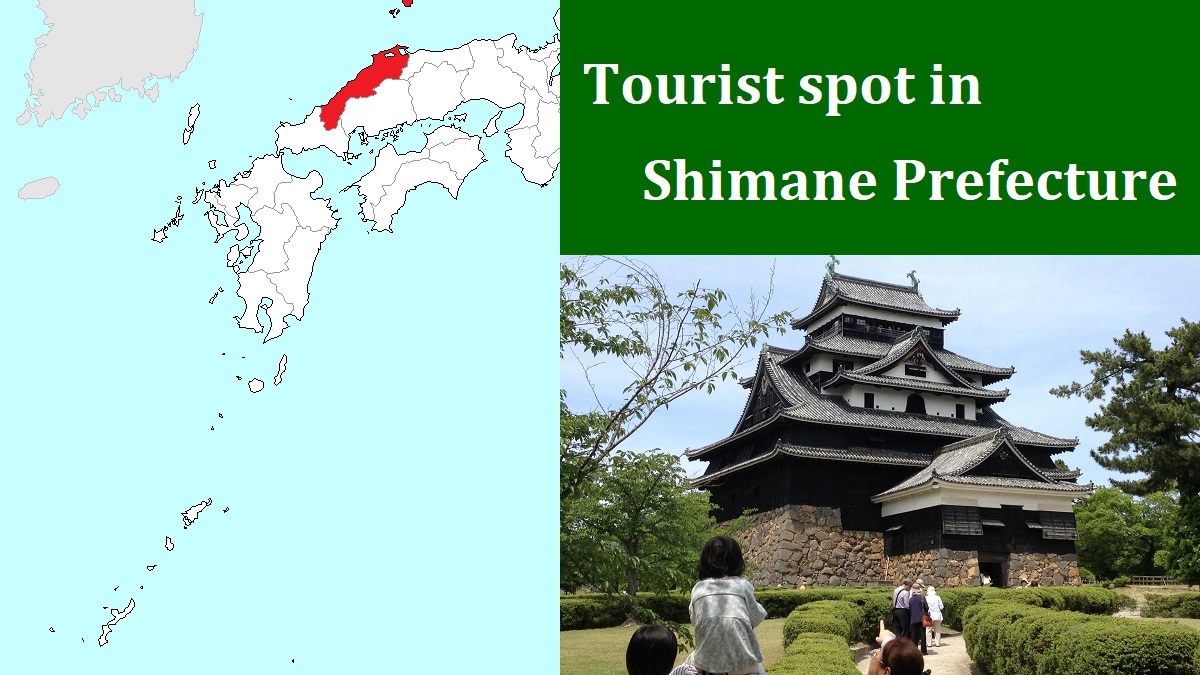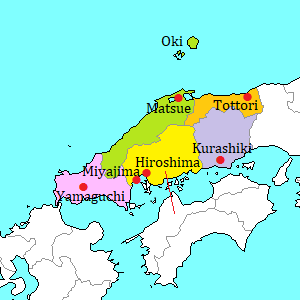Matsue Castle [松江城]
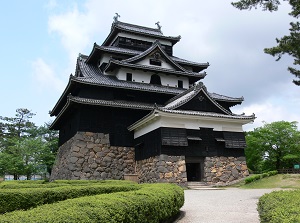
Matsue Castle
Photo by Shimane Prefecture
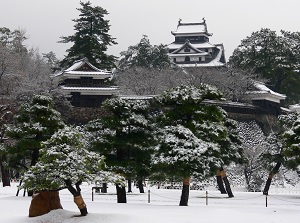
Matsue Castle in winter
Photo by Shimane Prefecture
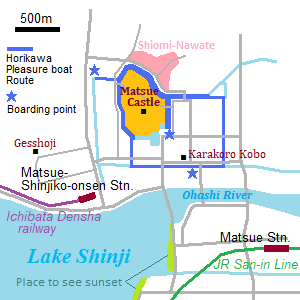
Matsue Castle is a castle located in the center of Matsue city.
Matsue is the prefectural capital in Shimane Prefecture, and is located at the norteast part of the prefecture.
Lake Shinji is to the west of central Matsue, and Lake Nakaumi is to the east.
Ohashi River connects the both lakes and flows through the city from west to east.
Matsue Castle is located on the north side of Ohashi River, and is about 2 km northwest of JR Matsue station.
The castle was built as the base for governing this area in 1611.
This castle has a legend.
When this castle was under construction, it was very hard to complete the base of the castle tower.
Because of that, a few beautiful girls were abducted secretly, and they were buried alive as victim.
As a result, the castle was completed perfectly.
But the lord of the castle and his son died suddenly.
In addition, the samurais working in the castle heard the sobs from somewhere.
People thought that was the curse of the girls.
When new lord came, a female ghost appeared in front of him.
She said to him with a ferocious look, "This castle is ours!".
He listened to her, then he made an offering to them in the castle.
Since that, it is said that the ghost had never appeared.
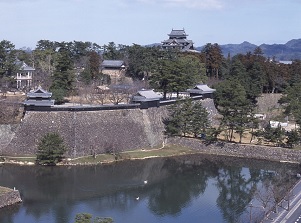
Moat of Matsue Castle
Photo by Shimane Prefecture
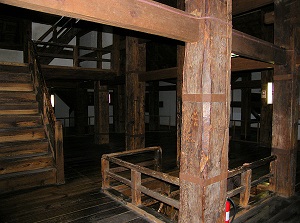
Inside of Matsue Castle
Photo by Railstation.net
After the end of feudal period in 1868, the new Meiji Government demolished many castles in Japan because the castles were unnecessary for the modern state.
Fortunately, only the castle tower was preserved, and it was designated as a national treasure.
It is one of the 12 castles in Japan that original castle tower remains.
It is about 30 meters high, and has five floors.
Visitors can enter the inside of castle tower.
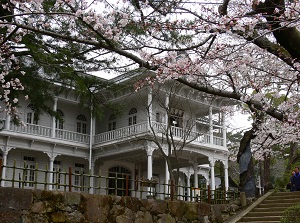
Kounkaku
Photo by Shimane Prefecture
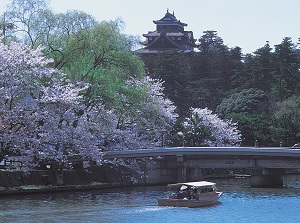
Horikawa Pleasure Boat
Photo by Shimane Prefecture
The site of the castle is roughly oval and is surrounded by a moat.
It is about 400 meters from east to west and about 700 meters from north to south in width.
The site is opened to the public as a park.
The castle tower is around the center of the site, and there are a few Shinto shrines are in the site.
And there is a Western-style building Kôunkaku (興雲閣) to the south of the castle tower.
It was built as a lodging for Emperor visiting Matsue in 1903.
It had been used a museum until 2011, then it is opened as a historical building now.
Horikawa Pleasure Boat is operated on the moat.
It is the pleasure boat for enjoying the scenery on the moats.
There are three boarding points around the castle, and the boat returns to the point where you come on board.
The length of each route is 3.7 km, and it takes about 50 minutes.
Shiomi-Nawate district (塩見縄手)
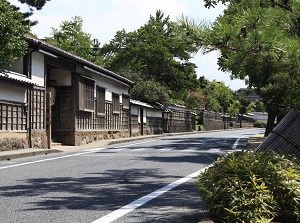
Street in Shiomi-Nawate
Photo by Shimane Prefecture
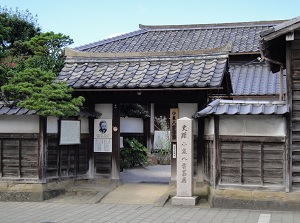
Former Lafcadio Hearn's Residence
Photo by Shimane Prefecture
Shiomi-Nawate is a district about 500 meters long along the north part of the moat surrounding Matsue Castle.
The district had been a samurai town, so several old samurai residences remain.
Patrick Lafcadio Hearn (1850-1904) was an Irish writer, and he was invited in Matsue as an English teacher in 1890.
He was attracted the scene in Matsue, then he was fascinated with Japanese culture.
He married a samurai's daughter and was moved around a few cities in Japan as a teacher.
He became a naturalized Japanese in 1896 when he was in Tokyo, then he called himself "Koizumi Yakumo" (小泉八雲).
He introduced Japan to Western countries by a lot of his English literary works.
He lived in Matsue for only 15 months, but he loved Matsue to death.
Matsue city has been thinking that Mr.Hearn was the great benefactor of the city, and a spot about him is in Shiomi-Nawate district.
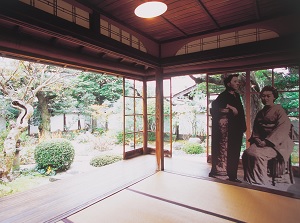
Inside of Lafcadio Hearn's Residence
Photo by Shimane Prefecture
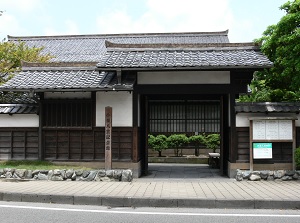
Lafcadio Hearn Memorial Museum
Photo by Shimane Prefecture
Former Lafcadio Hearn's Residence (小泉八雲旧居) is a residence where he lived from May to November in 1891, and was originally a samurai residence.
It is located at the northwest end of Shiomi-Nawate district.
Lafcadio Hearn Memorial Museum (小泉八雲記念館) is set up next to his residence.
It was opened in 1934, and his belongings, manuscripts, books and many other articles are displayed.
Bukeyashiki (武家屋敷) is a samurai residence located roughly in the center of Shiomi-Nawate district.
It is estimated that it was built around the late 1730s and middle-class samurai had been living.
Now it is a museum about samurai, and samurai's weapons, cloths and daily goods are displayed.
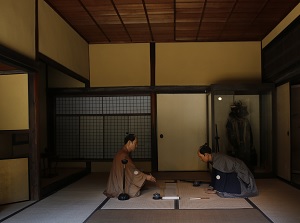
Inside of Bukeyashiki
Photo by Shimane Prefecture
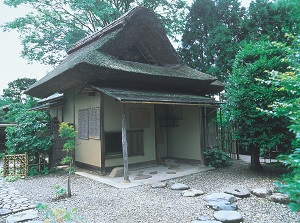
Meimei-an
Photo by Shimane Prefecture
Meimei-an (明々庵) is an old teahouse built by the lord of Matsue Clan in 1779.
It is on a hill overlooking Matsue Castle in the north edge of Shiomi-Nawate district.
It was moved to Tokyo, but was returned to Matsue in 1928.
Japanese green tea is served in the adjoining tea room.
Sightseeing spots around Matsue Castle
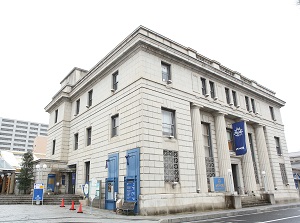
Karakoro Art Studio
Photo by Shimane Prefecture
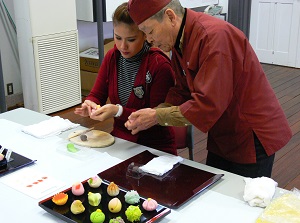
Creating confectionary in Karakoro Art Studio
Photo by Shimane Prefecture
Karakoro Art Studio ("Karakoro Kôbô" in Japanese) is a facility with some art studios opened in 2000.
It is located about 0.5 km south of Matsue Castle.
The building is former Bank of Japan Matsue Branch opened in 1918.
You can experience creating magatama (comma-shaped beads) or Japanese traditional confectionary which are two special products of Matsue.
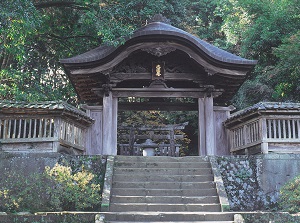
Gesshoji
Photo by Shimane Prefecture
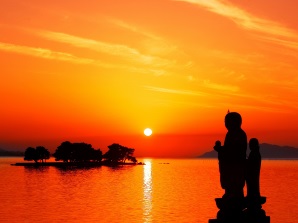
Sunset at lakeside of Lake Shinji
Photo by Shimane Prefecture
Gesshoji (月照寺) is a Buddhist temple of Jodoshu (Pure Land Buddhism), and is located about 1 km west-southwest of Matsue Castle.
It was founded in 1664, and became the family temple of Matsue Clan (Matsudaira Family).
Many hydrangeas in the precinct are beautiful in June.
In addition, the central area of Matsue is on the east side of Lake Shinji.
So, you can watch the beautiful sunset.
Especially, the lakeside about 1.5 km long from the south of Shinjiko-ohashi bridge crossing over Ohashi River is the good place to see the sunset.
How to get here
To Matsue, by JR limited express, about 2.5 hours from Okayama, about 1.5 hours from Tottori, about 30 minutes from Yonago.
Or, by route bus, about 30 minutes from Izumo Airport, about 45 minutes from Yonago Airport.
To visit some spots in Matsue, it is convenient to use Lakeline Bus.
It is a route bus for sightseeing and is operated every 20 or 30 minutes.
It starts JR Matsue station and runs around the main area.

